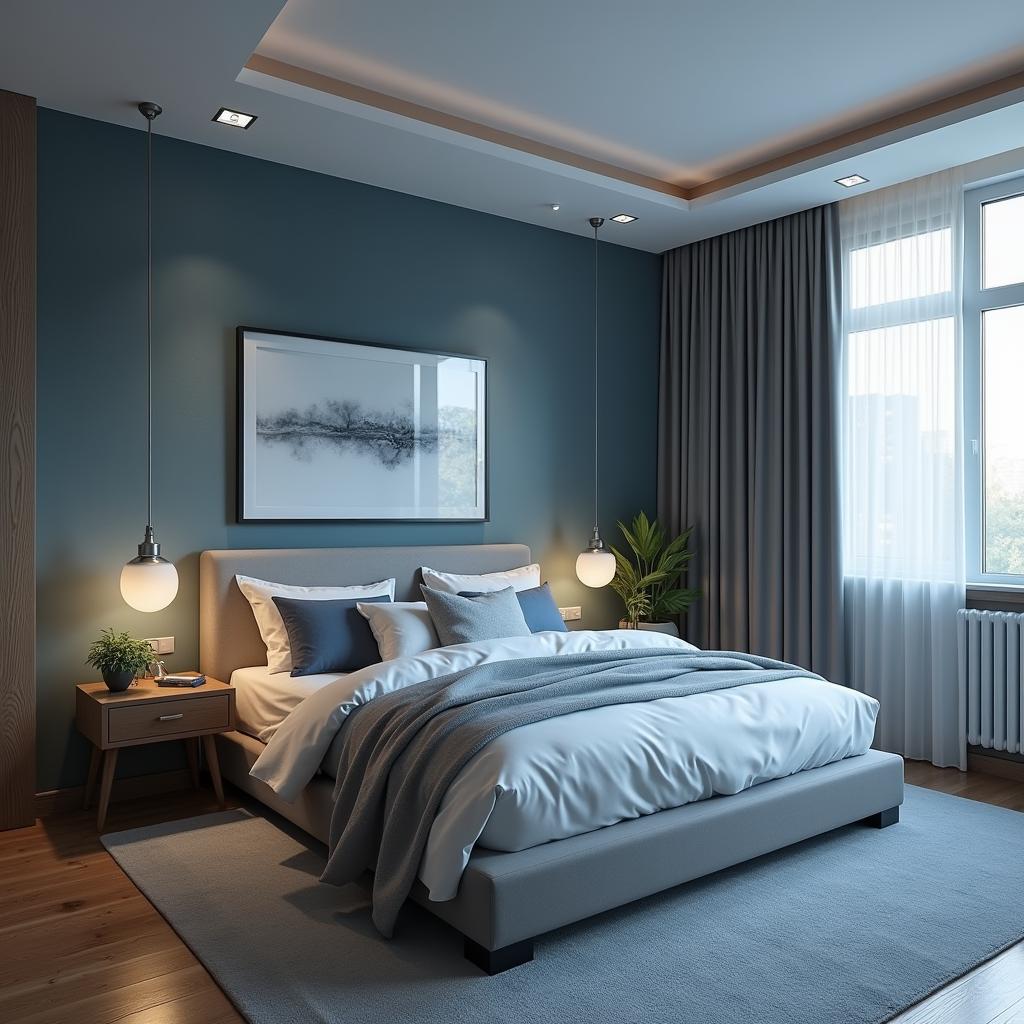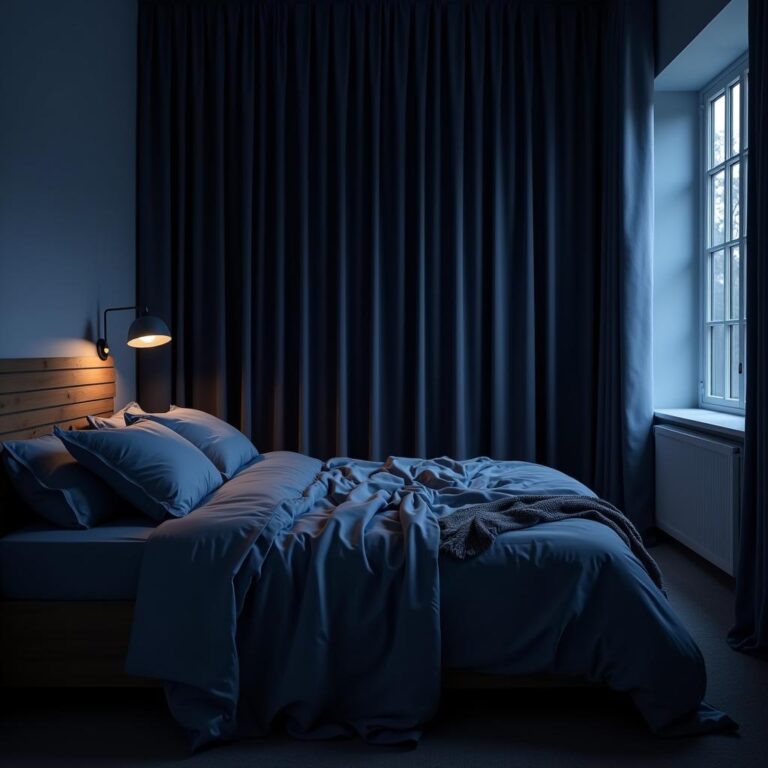Ideal Bedroom Temperature for Sleep: What Science Says
Getting a good night’s sleep is essential for our physical and mental well-being. One critical factor that plays a significant role in sleep quality is the temperature of your bedroom. In this article, we will explore the ideal bedroom temperature for sleep based on scientific research and expert opinions. We will also discuss how temperature affects sleep cycles, provide tips for achieving the right environment, and other factors that contribute to optimal sleep health.
The Science Behind Sleep and Temperature
Research has shown that temperature significantly affects our sleep quality and duration. The body’s internal temperature naturally fluctuates throughout the day and drops during sleep, which helps facilitate the various stages of sleep. When the bedroom temperature is too high or too low, it can disturb this natural rhythm and hinder the ability to fall and stay asleep.
According to sleep experts, the ideal bedroom temperature for sleep is typically between 60 to 67 degrees Fahrenheit (15 to 19 degrees Celsius). This range allows the body’s temperature to drop enough to signal that it is time to sleep while still remaining comfortable throughout the night.
Understanding Sleep Cycles
To fully appreciate the importance of bedroom temperature, it is crucial to understand sleep cycles. Our sleep is divided into several stages, including light sleep, deep sleep, and REM (rapid eye movement) sleep. Each stage plays a vital role in physical restoration, memory consolidation, and emotional regulation.
During deep sleep, the body undergoes repair and regeneration, and a cooler environment helps facilitate this restorative process. If the room temperature is too high, it may lead to frequent awakenings and incomplete sleep cycles, resulting in feelings of lethargy and irritation during the day.
Factors Affecting Ideal Bedroom Temperature
While the general recommendation for an ideal bedroom temperature is between 60 to 67 degrees Fahrenheit, individual comfort levels can vary based on several factors:
- Personal Preference: Some people may feel more comfortable at slightly higher or lower temperatures. It’s essential to find a temperature that feels right for you.
- Sleepwear: The type of clothing you wear to bed can affect how hot or cold you feel. Lightweight, breathable fabrics can help with temperature regulation.
- Bedding: The material and thickness of your blankets and sheets can influence your comfort level. Natural fibers like cotton or linen are often more breathable than synthetic options.
- Humidity: High humidity can make a room feel hotter, while low humidity can lead to a dry environment. Maintaining an optimal humidity level (between 30-50%) can help improve overall comfort.
How to Achieve the Ideal Bedroom Temperature
Here are some practical tips to help you achieve the ideal bedroom temperature for sleep:
1. Use a Programmable Thermostat
A programmable thermostat allows you to set the temperature of your home to match your sleep schedule. Lowering the temperature slightly before bedtime can signal to your body that it’s time to wind down.
2. Invest in Quality Bedding
Using temperature-regulating sheets and blankets can significantly enhance your sleep experience. Look for bedding that wicks away moisture and allows for breathability, which can help maintain a comfortable sleep environment.
3. Opt for a Fan or Air Conditioner
If you live in a warmer climate or experience hot summer months, using a fan or air conditioning unit can help cool the room efficiently. Ceiling fans, in particular, can provide a gentle breeze that enhances airflow and comfort.
4. Limit Heat Sources
Electronics and appliances can generate extra heat that can disrupt your sleep. Make sure to turn off televisions, computers, and bright lights before bed. Consider using dim lighting to promote relaxation.
5. Experiment with Sleepwear
Choosing the right sleepwear is crucial for regulating body temperature. Lightweight, moisture-wicking fabrics can help keep you cool, while warmer options may be more suitable during colder months.
Potential Risks of Improper Temperature
An improper sleeping environment can lead to various risks, including:
- Insomnia: Difficulty falling or staying asleep can result from an uncomfortable temperature, leading to chronic insomnia.
- Excessive Daytime Sleepiness: Poor sleep quality can result in excessive daytime fatigue, which affects productivity and mood.
- Heat-Related Issues: Sleeping in an excessively hot environment can result in night sweats or discomfort, potentially leading to dehydration.
The Role of Sleep Hygiene
In addition to managing the bedroom temperature, practicing good sleep hygiene is essential for ensuring restful sleep. This includes:
- Establishing a Consistent Sleep Schedule: Going to bed and waking up at the same time each day can help regulate your internal clock.
- Avoiding Stimulants: Limit caffeine, nicotine, and other stimulants in the hours leading up to bedtime.
- Creating a Relaxing Environment: Make your bedroom conducive to sleep by keeping it dark, quiet, and comfortable.
Conclusion
Finding the ideal bedroom temperature for sleep is a key aspect of achieving restful, restorative sleep. By keeping your bedroom environment within the recommended temperature range, prioritizing comfort, and practicing good sleep hygiene, you can significantly improve your sleep quality. If sleep issues persist despite these adjustments, consulting a healthcare professional may be necessary to address any underlying concerns. Prioritize your sleep environment, and you’ll be well on your way to waking up feeling refreshed and energized!







